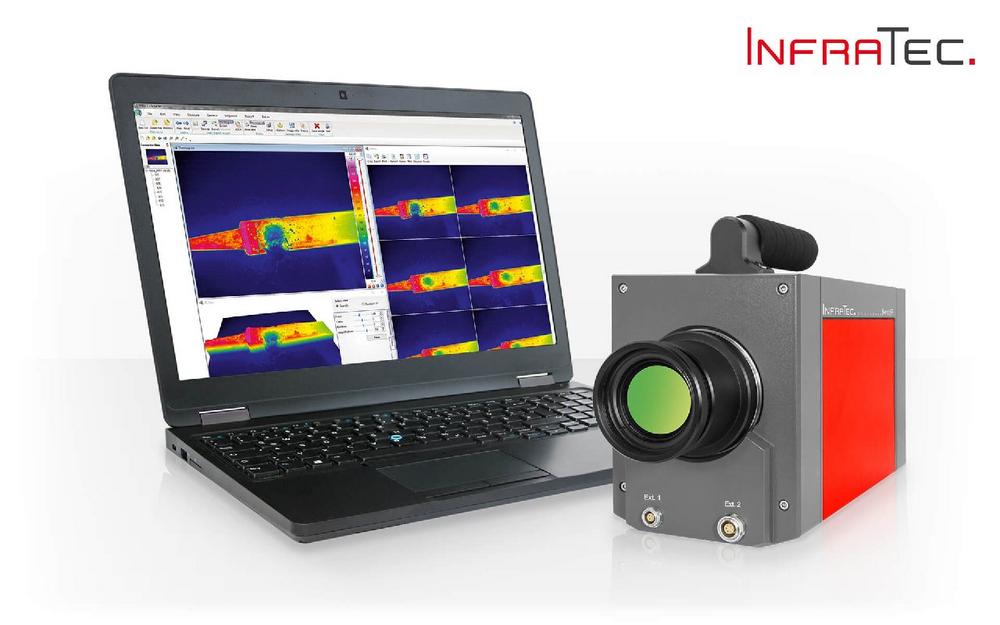InfraTec has now resolved this balancing act and offers an entirely new level of flexibility for its high-end camera series ImageIR®. Users can choose between two speed modes for the same camera. In standard mode, the familiar frame rates for full frame, half frame and sub-frame are available with full spatial resolution. In high-speed mode, images can be taken with the identical FOV – while the frame rates increase to more than three times the previous value.
Decrease number of pixels, keep the FOV
The principle behind this new option is called binning. In the course of this, four pixels of adjacent lines and columns are combined into one pixel in each case. Consequently, the number of pixels of the resulting thermal image decreases. However, the FOV remains constant, so that the scene section captured with the camera does not change. The object distance selected and the lens used can be retained for each respective task.
Switch over once, benefit twice
Switching between both speed modes is done conveniently by software. For users this means a twofold benefit. Firstly, they can analyse identical measurement scenarios under various aspects. If this involves depicting the smallest geometrical details, they use the native number of pixels of the camera detector. If greater emphasis is to be paid to the exact time lapse of a fast process, they revert to binning and the associated higher frame rates. The results of both scenarios can then be overlaid in a suitable manner.
Secondly, it will now be possible to use a single camera for the analysis of different measurement scenarios, which previously might have required the use of several different thermographic cameras. The example of the ImageIR® 9400 illustrates the wide range resulting from the latest development of InfraTec. Usually, full-frame images with (1,280 x 1,024) IR pixels at 180 Hz can be captured with this camera. Thanks to binning, in high-speed mode the frame rate for (640 x 512) IR pixels in the same FOV increases more than threefold to 625 Hz.
High-speed mode also increases the thermal resolution
In addition to speed, the signal-to-noise ratio improves in high-speed mode by a factor of approximately 2 due to the larger effective pixel area. This increase in thermal resolution ensures that even smaller temperature differences can be detected reliably.
With the new high-speed mode InfraTec again sets standards in the development of user-friendly thermography systems whose multivalent usability guarantees a great customer benefit. Top values at spatial and thermal resolution in conjunction with very high frame rates ensure that users can master their measuring and testing tasks with products from InfraTec’s high-end camera series ImageIR® with confidence.
The InfraTec infrared sensor and measuring technology company was founded in 1991 and has its headquarters in Dresden, Germany. The privately held company employs more than 200 employees and has its own design, manufacturing and distribution capabilities.
Infrared sensors, with electrically tunable filters based on MOEMS, count among the products of the infrared sensor division, next to spectrally mono and multi channel infrared detectors. These detectors can be used in gas analysis, fire and flame sensor technology and spectroscopy.
With its Infrared Measurement business unit, InfraTec is one of the leading suppliers of commercial thermal imaging technology. In addition to the high-end camera series ImageIR® and the VarioCAM® High Definition series, InfraTec offers turnkey thermographic automation solutions.
InfraTec GmbH Infrarotsensorik und Messtechnik
Gostritzer Str. 61 – 63
01217 Dresden
Telefon: +49 (351) 82876-0
Telefax: +49 (351) 82876-543
http://www.infratec.de
Presse/Marketing
Telefon: +49 (351) 871-8620
E-Mail: presse@infratec.de
![]()
